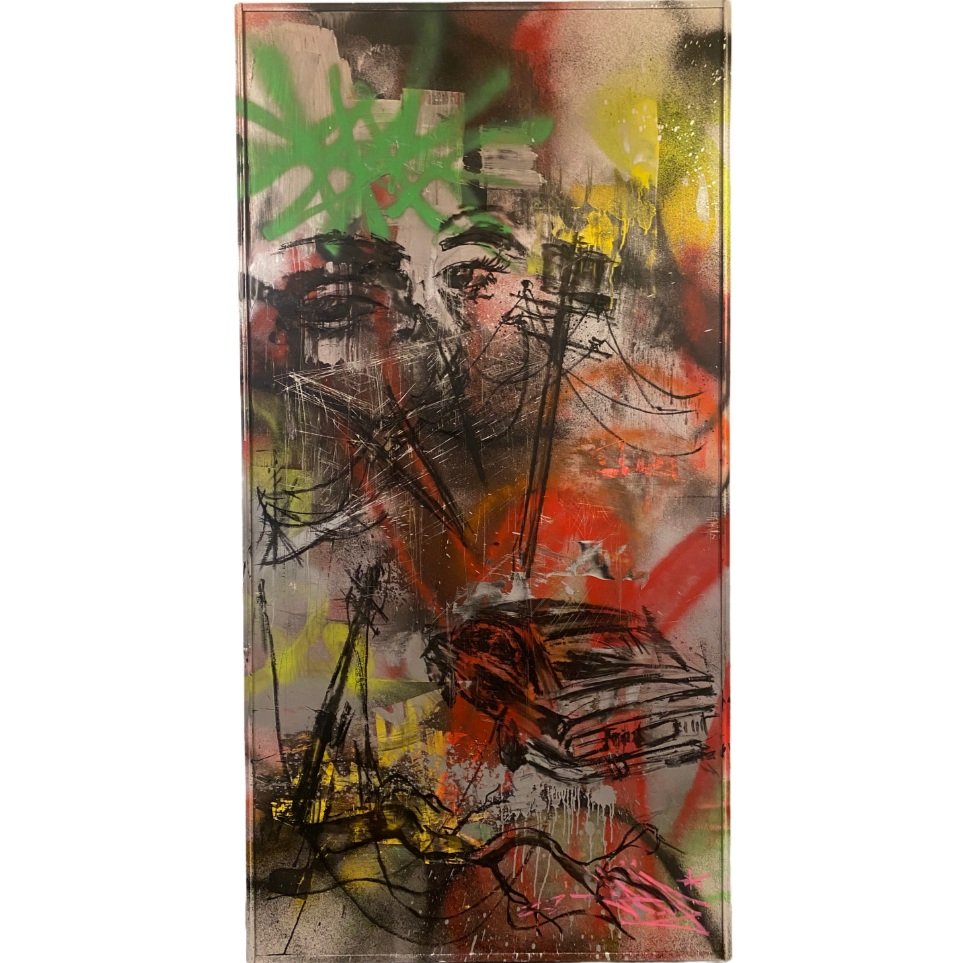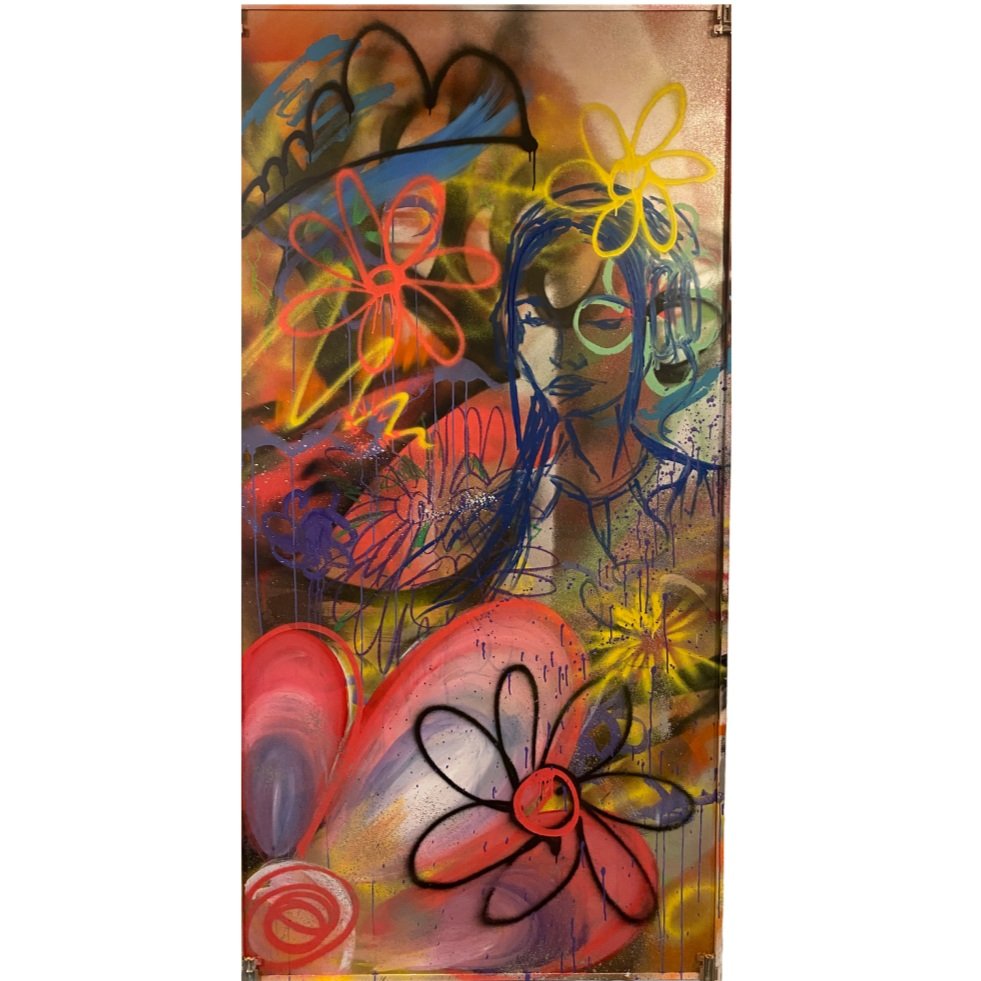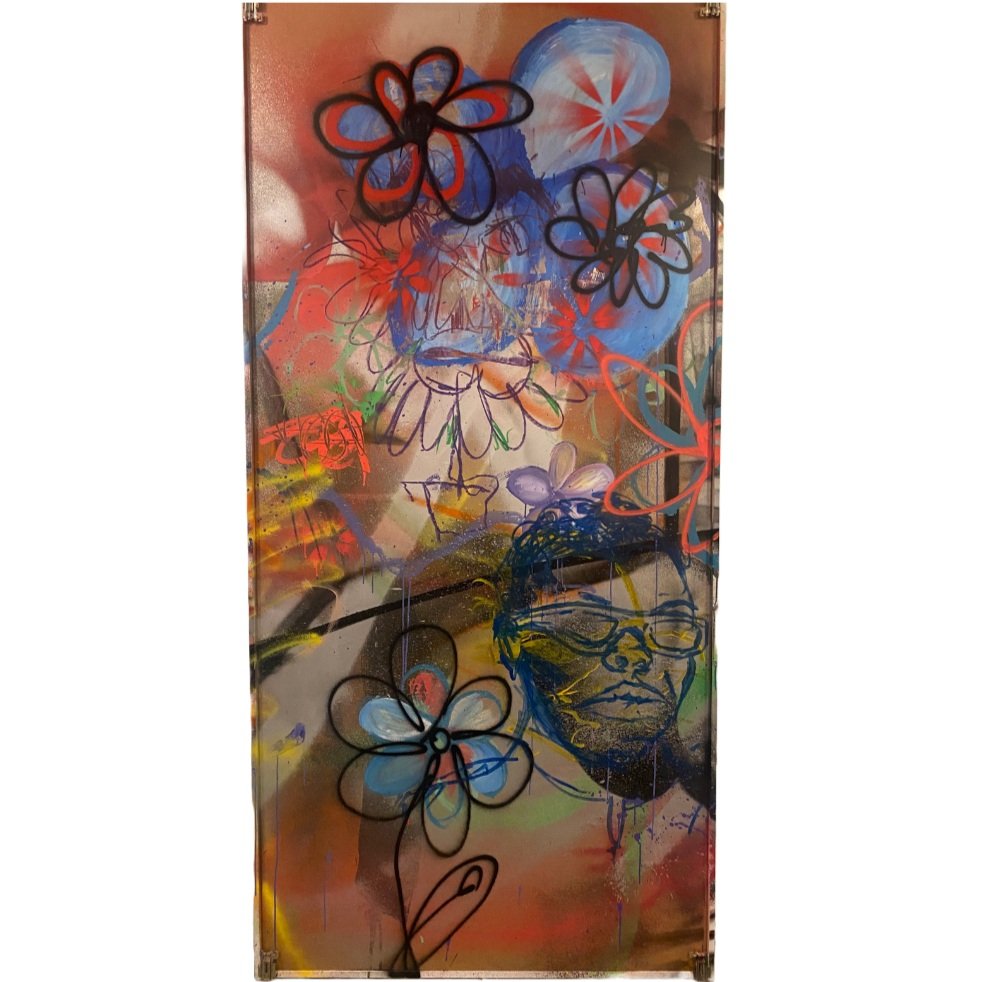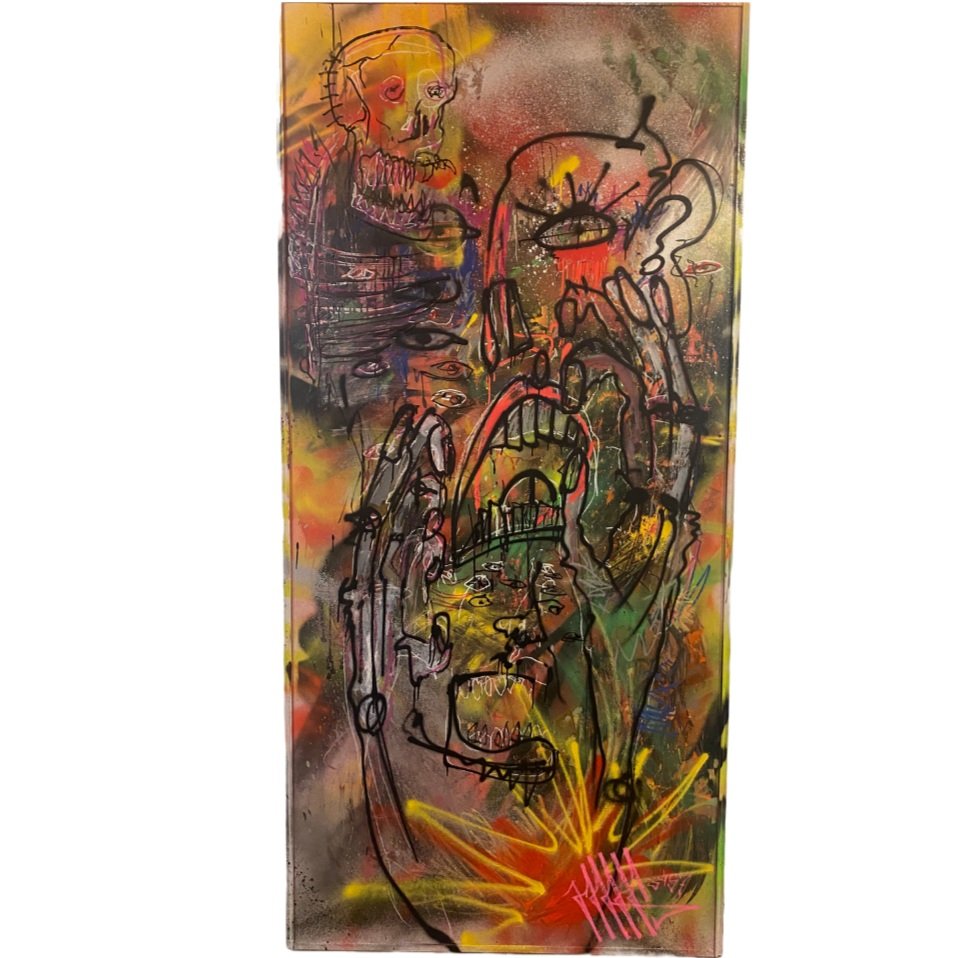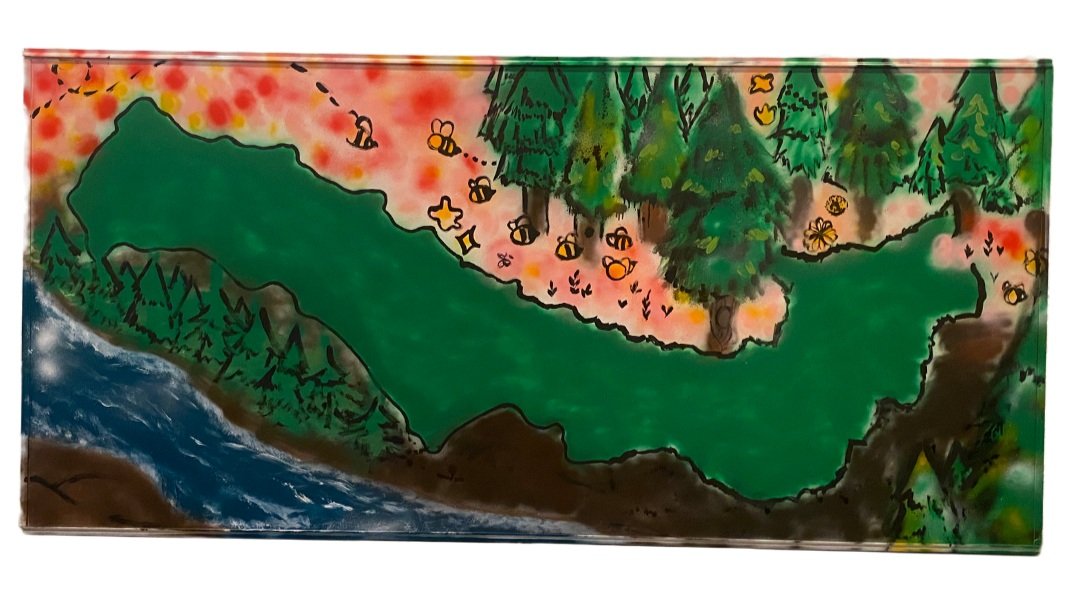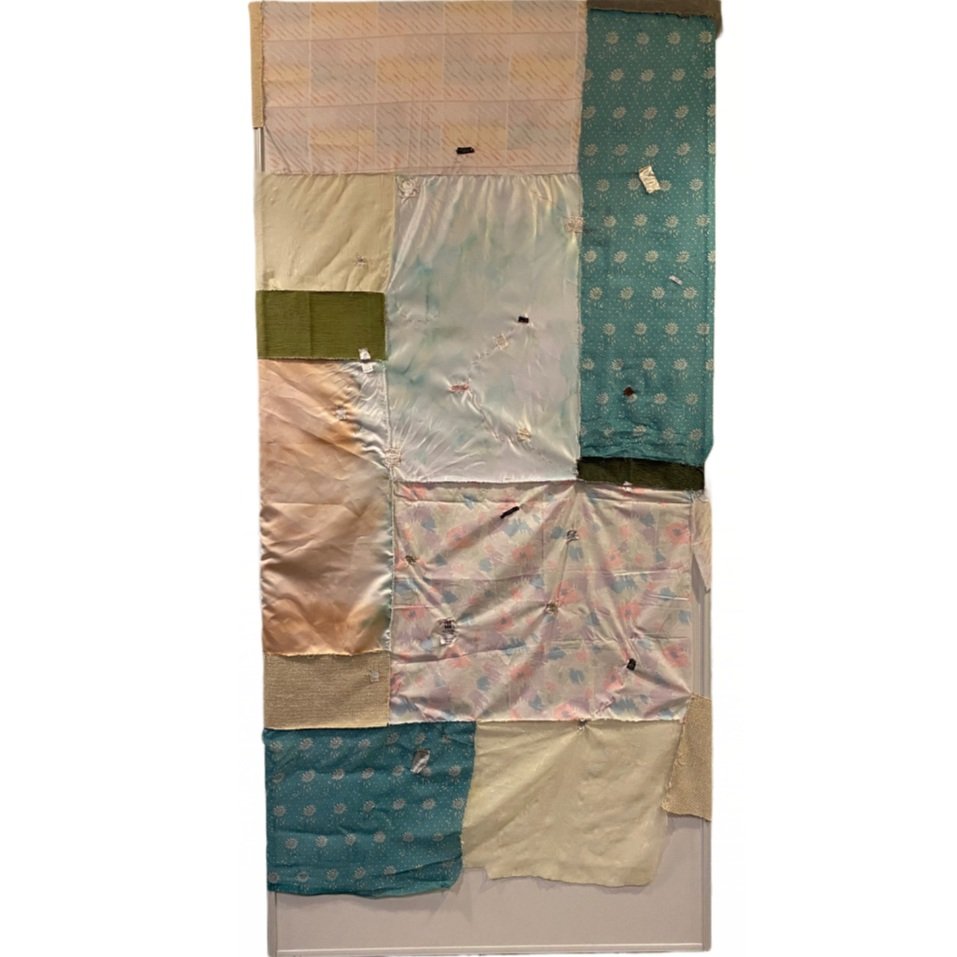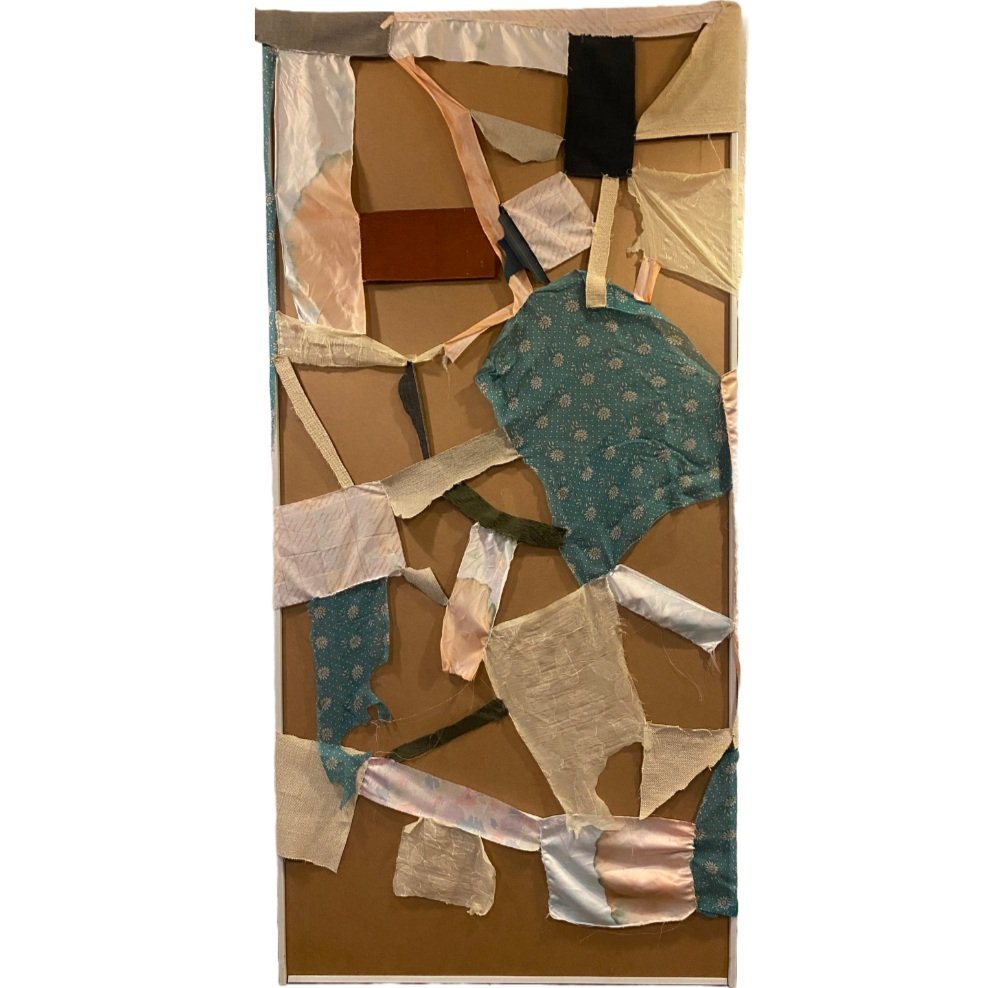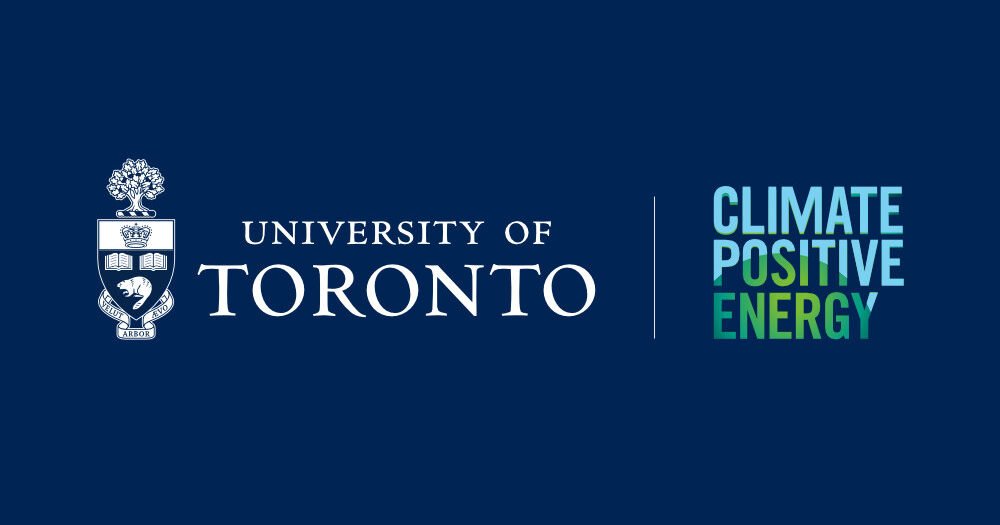Doorways
“Which Doorway will you choose to walk through?”
Collaborating with youth artists/organizations/climate organizations/content creators/photographers/videographers and creatives, we create art that conveys the inspirational future that we are fighting for. A liveable, healthy, affordable narrative based on embracing necessary change, scientific data, and a youth-based commitment to its realization. Drawing inspiration from the work of Vasili Kandinsky (as seen in the film Six Degrees of Separation, 1993), we are using both the front and backside of the “canvas”, to contrast inspirational visions on one side and the status quo on the other. Each piece represents the choices we all have; to desperately cling to doing the same, or collectively embrace systemic, life-saving change. It’s our choice. It’s your choice.
Nishina Loft
Principle 2: Prioritize and respect Indigenous sovereignty and autonomy.
I chose Indigenous sovereignty and displayed Indigenous growing practices. The three sisters are a growing method of corn, beans, and squash that shows the interconnectedness and knowledge that has been passed down. I painted florals with strawberries and blueberries along a clean waterway. There are traditional Haudenosaunee domes at the top. I always feel great showing my Kanien'keha:ka culture through art as a way of educating and representing Indigenous people.
FELIPE
Principle 4: End all fossil fuel subsidies immediately and rapidly wind down all fossil fuel use.
I started with a greenish palette to reflect the natural state. Then I weaved in fires and pandemics and these kinds of skeletal ideas in my head as I was thinking about fossil fuels.
I really wanted to convey this theme of decay and anguish, to make it feel like the world is coming to an end. The skeletal death-like figures relate to this idea of fossil fuels as something kind of archaic, so kind of a play between death, fossils/skeletal, fossil fuels.
Phillip Saunders
Principle 6: Accelerate the transition to zero emission buildings.
Principle 6 resonates with me because I think it's important for us to lessen the emissions we are putting out. Many Buildings are being built every year here in Toronto and the carbon footprint that is left behind is tremendous. My work depicts a world with zero emissions on one side, a color for an array of colors that communicate life, sustainability, clean air, and a zero-emission world. The other side of my canvas depicts darkness which is shown by storm clouds and gray colors that represent death and decay. The apartment buildings are seen as smoke stacks emitting carbon emissions.
Sigfried Echo Hemming
The theme of this piece surrounded emissions targets, greenhouse gas, and carbon pollution, with the goal of staying below 1.5C and reaching set climate goals. I wanted to illustrate this theme in a way that did not include numbers or literal imagery. This theme is important because it is incredibly relevant; especially the narrative of staying below 1.5C—because we’ve already surpassed that. However, it is a narrative that’s still pushed, as if we have not. This is part of where the performative aspect of these goals and narratives comes from.
My intention with this piece was to create a visual that was interesting on its own; but knowing the theme and intentions of learning, creating an opportunity for the viewer to really examine and think about the possible connections of what they see, and what was given. The theme has very much to do with air quality and pollution that is sustained in gas form, I chose trapeze artists and a Pegasus as the main subjects to represent the element of air. The circus setting is to showcase how most, if not all, political climate targets and conversations are entirely performative. The clown in a suit is likely the most literal imagery on the canvas; representing politicians, CEOs, and rich white men who have power. They are the fools.
TEIJI
Principle 3: Invest in a thriving, regenerative, zero emissions economy.
This car is from our time because we aren’t living in a zero-emissions future right now. I kept it really raw and present. We were talking about this interconnected web idea and I think that stuck with me.
During the recent thunderstorms, I was in a car outside and saw trees and power lines go down in front of me, and that was just 2 days ago.
ELLIOT
Principle 5: Prioritize public health, as the climate crisis is our single greatest health crisis.
Elliot chose to depict the contrast between what floral growth looks like in a regenerative Environment vs. our toxic environment. Elliot specifically depicted the health of nature as it pertains to the rest of the images in this trip tec, to correlate that the health of the environment directly is correlated with the health of the humans depicted in the two other related pieces by Teiji and Felipe.
Ujwal Kartik Mantha
The Seventh Principle (2022) is a mural that was specifically created for the Ontario Climate Strike happening at Queen's Park on the 23rd of September 2022. It is part of a series of six double-sided panels, created by six artists from Toronto who were each given a different principle from the Ontario Climate Action Plan. Principle Seven focuses on transportation and the drive to move towards zero-emission, community-centered transportation. The double-paneled artwork invites the viewer to look at the problem and its solution, engaging them as they walk around it. The artwork itself uses a mix of media from Collage to paint and is mirrored on both sides to show how this problem and its eventual solution may not be that different from each other. The surface of the panel has been covered with maps of Toronto to bring this global problem into a local setting and it's been interspersed with human body parts. This is to imagine the link between the city and the body and how our actions as commuters affect the "health" of the city. The red tire treads on the front of the panel are visceral and striking and the viewer is encouraged to follow the bright yellow line (coloured to look like a subway line) to the other side of the panel which is lighter and inviting, interspersed with hand prints to represent how clean, zero-emission transportation engages and benefits the whole community.
Daniels Art Collective (@lera_de27, @line_sb, @e_pearce86, @missng.ideas)
Principle 8: Urgently protect natural biodiversity.
This painting (below) is based on climate principle number 8 which is focused on biodiversity. It represents the Greenbelt and Ontario’s Boreal Forests and the importance of conserving this important ecosystem. The flip side is the consequences of the policy that Doug Ford is trying to push forward of building a highway through it.
Reem Abdelhaleem
Principle 9: Invest in local, organic, regenerative agriculture and plant-rich food systems.
The theme of my artwork is sustainable farming, both sides showing a 'door' to our possible future. One side emphasizes emotions of gloom, despair, and death. While the other illustrates life, diversity, and growth. Allow the emotions that both sides make you feel, to let you reflect on what your future could look like. With techniques of regenerative farming, and sustainable food practices our world can be one full of colour and life.
Daniels Art Collective (@lera_de27, @line_sb, @e_pearce86, @missng.ideas)
Our artwork is about the role of education in climate change. The first side is about how the ignorance of climate change continues the cycle of destruction. The other side is an open eye to represent thought, education, and raising awareness of climate change and how that can lead to solutions.
Nika Moeini
Principle 11: Reinstate an independent office of the Environmental Commissioner.
Here is info on my art piece: Reinstating the Office of the Environmental Commissioner is point 11 on the Ontario Climate Emergency Campaign's 12-point Climate Action Plan. It is the accountability and leadership piece of the plan to bring the other 11 other points to fruition. Therefore I wanted my art piece to reflect the kind of leadership we want to see to bring us to the vision of the world we want, as well as an art piece to demonstrate the current void in leadership with the status quo. On one side of the door, we see a vision of an inclusive, equitable, accountable Office of the Environmental Commissioner, with a team made up of all races and types of people, and a pencil to write the future held up by Indigenous leadership from the Mississaugas of the Credit First Nation and the Commissioner. There is a Tree of Values to bring life to the values that can inform the office, and a Tree of Dream Policies to give a nod to the other points of the climate action plan and some policies close to my own heart, such as the Plant-Based Treaty. The overall vibe is bright and hopeful and Queen's Park looks close and within reach of advocacy. On the reverse, we see the fear, anger, and sadness associated with the dark storm. Queen's Park looks inaccessible behind a Do Not Enter sign and two young advocates are seen crying, wondering if anyone can hear them and if anyone will step up and defend Mother Nature. The raindrops in shades of red show words associated with disillusionment about the climate crisis, such as greed, segregation, and inequality. The contrast between the two scenes demonstrates why an Office of the Environmental Commissioner is necessary to create the bright future we all desire.
Alyssa Rocca
Principle 12: Leave no one behind.
When we think of climate change, we are faced with the realistic fact that we can’t escape it. It’s a global crisis that has a domino effect whether it is a positive or negative impact. Principle 12 “Leave no one behind”, outlines this concept by explaining that all people from different backgrounds and ethnicities have a role in climate recovery. The artwork I created for this principle begins with the positive side; illustrating that if we all come together to fight climate change we can become victorious. We would have cleaner air, waters, and lands, we would have lower carbon emissions and reduce our carbon footprint. But if we lean towards the negative side of principle 12, we are faced with gaps in our system and dispersed from our neighbours. This creates a destructive ecosystem that is led by human action and the rise of the earth’s health. To live a better life, we must think of the quality of our earth and how we can continue to adjust our actions to make a more sustainable future.
All of these fabrics were donated and so I brought them all together to reflect all of our communities coming together to fight climate change. As you can see, there are these details like these tags, and all these tags have locations on the ‘Made in Canada, Vietnam, Bangladesh, Nicaragua’ so it’s all of these communities coming together to fight climate change. On the reverse side, there are all these gaps and holes, to represent that if we continue with this system that we have now, we are going to have gaps and holes as we try to fight climate change, and we are not going to collectively get it.


